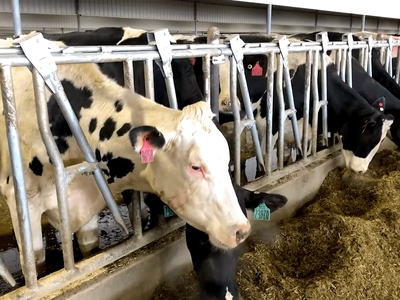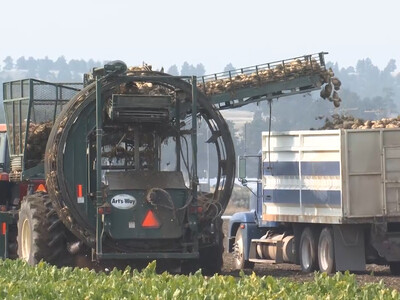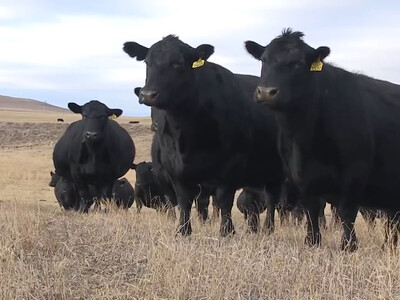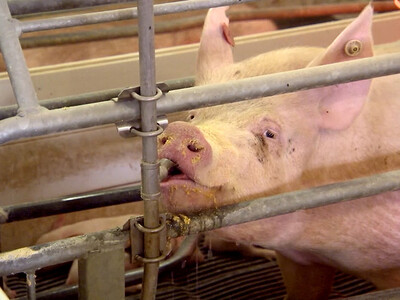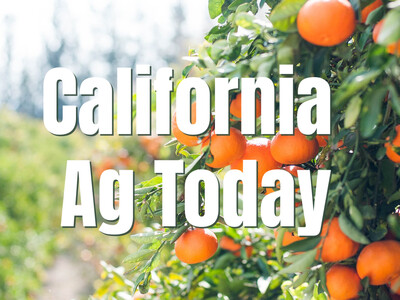Soaring Sugar Prices and Mexican Drought Challenges USDA's Supply Management
USDA is struggling to manage sugar supplies amid soaring domestic and international prices and a drought that continues to devastate Mexican growers, slashing the amount they can export to U.S. food and candy manufacturers.Under the farm bill’s sugar program, the department is required to manage sugar imports and maintain domestic sugar prices, in part, by waiting until April to decide whether additional imports are needed. However, with stocks tightening, the department announced March 7 that it would increase by 137,789 tons the amount of raw sugar that can be imported under low tariffs.
Even with the increase, USDA estimated in its monthly World Agricultural Supply and Demand Estimates, released March 8, that the stocks-to-use ratio for the 2023-24 marketing year would be only 13.4, just under the minimum level of 13.5 that USDA tries to maintain supplies.
USDA’s decision to expand the tariff-rate quota, or TRQ, for low-duty sugar drew a swift rebuke from Rep. Brad Finstad, a Minnesota Republican who chairs House Agriculture’s Subcommittee on Nutrition, Foreign Agriculture and Horticulture. Minnesota is the largest U.S. producer of sugar beets.
The department's choice to “ignore congressional authority and more than 15 years of precedent undercuts American farmers and puts at risk the strong U.S. sugar policy that our domestic industry relies upon,” Finstad said in a statement. “Farm and food security is national security, and we must focus on supporting the business of American farm families rather than foreign countries.”
In a separate response to
Agri-Pulse
, Finstad indicated he’s concerned the USDA action sets a new precedent going forward for increasing imports. His staff noted the stocks-to-use ratio was as low as 13.1% in June 2023 but rose to 17.1% by the end of the marketing year in September after USDA increased the TRQ by 125,000 tons in July.
“By choosing to bypass congressional authority, USDA has set an unlawful precedent,” Finstad said. “This is not only harmful to our producers and processors who rely on certainty to make marketing decisions for their crop, but also opens the door to future and more harmful increases to the TRQ in the future.”
But New Hampshire Democratic Sen.Jeanne Shaheen, who has pushed for rolling back the sugar program, welcomed USDA's decision to increase the TRQ.
“For years, outdated federal sugar policies have played a key role in increasing prices at grocery stores for consumers across the nation. I’m pleased to see the U.S. Department of Agriculture heeding my call to lower food prices for Americans by increasing unnecessarily restrictive sugar import quotas. While this action is helpful, there’s so much more Congress must do to reform the federal program that props up the sugar industry in order to reduce costs for consumers and businesses," she said in a statement to
Agri-Pulse
.
Imports from Mexico generally serve to stabilize U.S. domestic supplies, accounting for nearly half of all U.S. imports from 2006 through 2022. But Mexican shipments to the U.S. have plunged to an estimated 666,000 tons for the 2023-24 marketing year, accounting for only 20% of the U.S. import needs. By comparison, Mexico exported 1.38 million tons of sugar to the United States in 2021-22 and 1.2 million tons last year.
“The sugarcane harvest in Mexico continues to lag at levels unprecedented in recent times,” USDA said in the WASDE report.
Meanwhile, domestic sugar prices have been a small contributor to food inflation, and they continued to move upward in February, rising 0.6% amid historically strong domestic and international prices, according to the latest Consumer Price Index. The cost of sugar is up 6.1% since February 2023; by comparison, the overall cost for food eaten at home is up just 1% year over year.
The U.N. Food and Agriculture Organization’s index of global sugar prices is up nearly 80% from the average in 2020.
Jeff Dobrydney, a senior vice president at JSG Commodities Inc., says the situation in the global sugar market is “essentially unparalleled,” with the U.S. food industry increasingly relying on buying high-tariff sugar to make up for lagging supplies of lower-cost, low-duty sugar from Mexico or other countries under TRQs.
High-tariff “sugar is not only competing within the confines of the U.S., it's tripled its market share over the past three years,” Dobrydney said at USDA’s Ag Outlook Forum in February. USDA estimates the U.S. will import 715,000 tons of high-duty sugar for 2023-24, up from 290,000 tons in 2021-22.
The world price of raw sugar hit 26 cents per pound in November, and the commodity is still trading at about 22 cents per pound, up from 16 cents in the fall of 2022. The domestic price for raw cane sugar, meanwhile, is up to 39 cents per pound, nearly double the marketing loan rate set under the 2018 farm bill. The marketing loan rate serves as an income support level for producers. High-duty sugar imports cost slightly more than the domestic price because of the tariff.
“We don't see that situation in the world market changing anytime soon,” Dobrydney said, noting global supplies are vulnerable to problems in both Brazil and India. Indian analysts are concerned about that country’s next crop.
Food and candy companies say the tight sugar supplies highlight the need to reform the U.S. sugar program, citing a Government Accountability Office report issued last fall.
GAO called on USDA and the U.S. Trade Representative’s Office to reevaluate the quota reallocations and consider methods of redistributing them. The report, which estimated that the sugar program costs consumers $1 billion annually in higher food prices, said the quota allocations are “based on 40-year-old data that doesn't reflect current market conditions.”
The increase in imports of high-tariff sugar is “a clear signal of market dysfunction,” said Grant Colvin, executive director of the Alliance for Fair Sugar Policy, a coalition whose members include the National Confectioners Association and American Baking Association. The group hopes to use the next farm bill to win changes to the sugar program that would boost sugar supplies, including by increasing domestic production.
“We’re not asking for big structural changes, and we’re certainly not seeking to undermine the producers’ safety net,” he said.
In a statement to
Agri-Pulse
, Rob Johansson, chief economist for the American Sugar Alliance, which represents domestic sugar producers and processors, downplayed the situation's impact on consumers. He noted USDA has continued flexibility to increase imports of lower-duty sugar, if needed.
“The U.S. remains the fifth largest sugar producer and the third largest sugar importer in the world, giving American consumers and food manufacturers plenty of options for sugar,” said Johansson.
“Given that sugar is roughly 2.5% of the price of retail food items and food manufacturers are posting record profits amid shrinkflation, complaints about the cost of high-tier sugar adding less than 1/20
th
of a cent to the price of candy bar are not likely to gain much traction with Americans.”
As with other commodities, U.S. sugar producers have also seen input costs rise sharply in recent years. According to a recent Louisiana State University analysis, the cost of producing sugar beets rose 30% from 2018 to 2022, while the cost of growing cane rose by 38% from 2019 through 2023. The average break-even price for sugarcane was 28.2 cents per pound in 2023, up from 17.2 cents in 2018, the analysis found.
Source: Agri-Pulse




